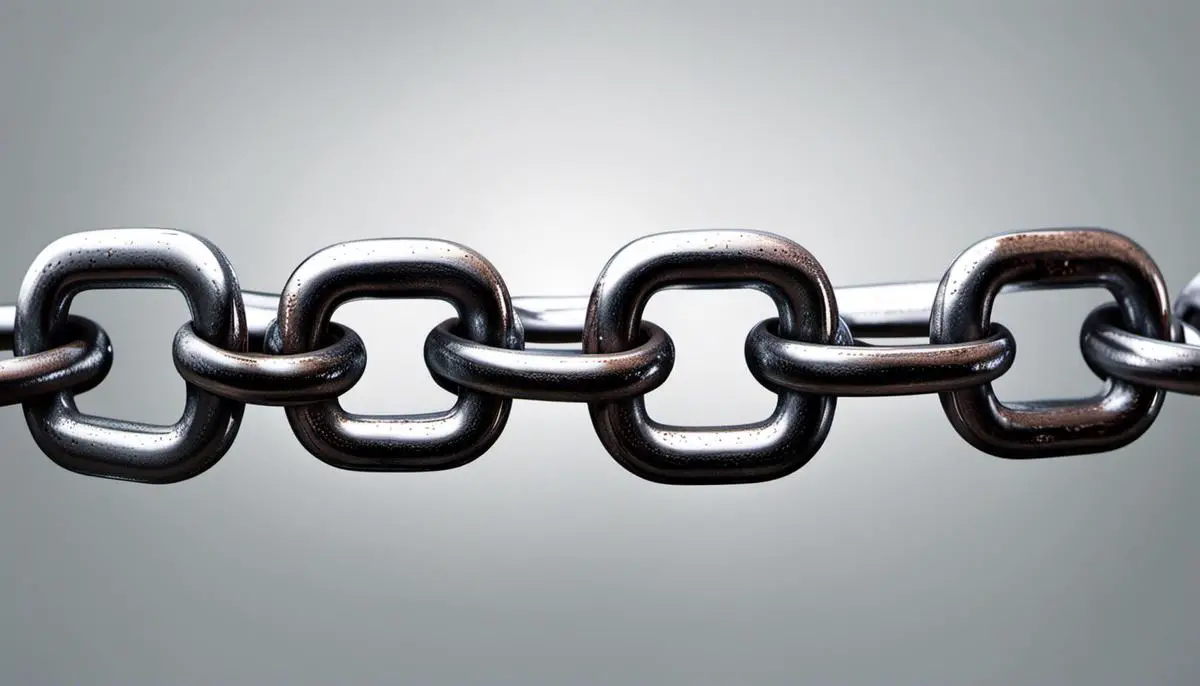Maintaining a smoothly functioning website is essential in the digital age we live in, and one critical aspect that often gets overlooked is the presence of broken links. Broken links can not only hinder the navigability of your site, risking users’ dissatisfaction, but they can also damage the image of your site in the eyes of major search engines, negatively affecting your Search Engine Optimization (SEO) performance. This essay aims to provide an in-depth understanding of what broken links are and the issues they pose. Furthermore, it discusses methods to check for these links, both manually and using various available tools. Finally, it provides practical strategies to fix these broken links, ensuring a seamless user experience and optimum SEO performance.
Understand Broken Links
Understanding Broken Links
Broken links, also known as dead links, are URLs on a website that no longer work or lead to a non-existent or inaccessible web page. These are often frustrating for users because they lead to a page that the user cannot interact with or view, usually displaying error messages such as the 404 error or the 410 error. These errors mean that the webpage is not found or that it is permanently unavailable, respectively.
Types of Broken Links
The most common types of broken links are 404 errors and 410 errors.
A 404 error occurs when the server can’t locate the page. This usually happens when the page has been deleted or moved and the URL was not changed accordingly. Users will typically see a message like “404 Not Found”.
A 410 error is similar to a 404 error but is usually presented when a page has been intentionally removed and will not be returning. The server will return a “410 Gone” HTTP status code when the resource requested is permanently removed.
How Broken Links Affect SEO
A site’s search engine ranking can take a significant hit if it contains broken links. When a search engine’s crawlers go through a website and come across a broken link, they take note of it. Crawlers view these links as a sign of an outdated or poorly maintained website, which can negatively impact the site’s credibility in the search engine’s view.
Moreover, broken links disrupt the process of indexing your webpages. Search engine crawlers rely on links for movement around websites. When they encounter a broken link, their journey is interrupted, which hinders the indexing process.
Therefore, rectifying broken links as and when they occur is a crucial aspect of website maintenance and SEO.
Implications on User Experience
Broken links can also result in a reduced user experience. When a user encounters an error page because of a broken link, it can cause frustration, leading them to leave the website. Frequent encounters with broken links can make users lose trust in the website and hesitate to return. Hence, periodically checking for and fixing broken links can enhance user satisfaction and prevent potential damage to a site’s reputation.

Manually Check for Broken Links
Identify Potential Pages for Broken Link Check
Begin this task by identifying all the pages on your website that include links. These may include pages containing internal links (i.e., links leading to other pages on your site) or external links (i.e., links leading to sites outside your domain). Create a list of these pages to make the process more organized and simple.
Review Page for Obvious Link Errors
Once you’ve identified every page with links, you can now start to manually review each page. Look for any obvious signs of link errors such as links leading to 404 Error Pages or links that don’t lead anywhere at all. This would involve clicking each link and observing the outcome. Make sure to take note of these errors.
Test Links for Unexpected Redirects
Another important aspect of manually checking for broken links is verifying that your links are not unexpectedly redirecting to irrelevant pages. An unexpected redirect might not necessarily take a user to a 404 Error Page, but it may send them to a page unrelated to the link’s expected destination. These redirects may confuse and frustrate your users and possibly be detrimental to your website’s reputation.
Check for Link Consistency
Verify the consistency of the links in your website. All pages should have accessible links to primary pages like the Home, Contact, and About Us pages in order to make it user-friendly. Check to see that all links are in their assigned places and functioning aptly across multiple pages.
Evaluate Link Relevance
Evaluate the relevance of the links themselves. Even without technical issues, an irrelevant link can be deemed ‘broken’ because it does not help the user or contribute positively to user experience. Relevance can change over time, so checking this regularly is vital to keep links in-line with content evolution.
Use of Browser Tools for Link Verification
Take advantage of browser tools and extensions for link verification. Tools like ‘Check My Links’ (available on Google Chrome) perform a quick scan of your webpage and identify both working and broken links. Even though this is a manual check, these tools can be of great assistance, making the process more seamless.
Perform Regular Link Checks
Just as website content tends to change over time, so do links. Even though a previously checked link was functional, it may not remain so over time. Regular link checks are therefore necessary to maintain the integrity of your site.
Remember to correct or remove any broken or irrelevant links as soon as they are discovered. This aids in enhancing user experience and improving the general performance of your website.

Photo by stevenwright on Unsplash
Use of Broken Link Checkers
Understanding the Importance of Broken Link Checking
Broken links on a website not only disrupt user experience but can also affect your website’s search ranking negatively. Therefore, it’s essential to periodically check your website for broken links. Fortunately, there are various broken link checkers available that can automate this process, making it efficient and manageable. Some of these tools include Google’s Check My Links, Dead Link Checker, and more.
Using Google’s Check My Links
Google’s Check My Links is a Chrome extension that can quickly scan your website for broken links. Once installed, you can go to your website, click the Check My Links extension button, and it will begin scanning your webpage. The tool will color-code the links, with valid ones in green and broken ones in red. By clicking the red links, you get details about the specific problem, allowing you to go ahead and fix the problem.
Leveraging Dead Link Checker
Dead Link Checker is an online tool that operates in a similar fashion. Navigate to the Dead Link Checker website and input your website URL. Choose whether you want to check the entire website (Multi-check) or just a single webpage (Single check). Click ‘Check’ and wait for the tool to generate a comprehensive breakdown of all the links on your site, identifying which are broken.
Implementing Screaming Frog SEO Spider
Another robust broken link checker is Screaming Frog SEO Spider. After downloading and installing the software, you input your website URL into the program. It proceeds to crawl your entire website, checking for broken links amongst other SEO issues. It provides a detailed report that includes the broken link’s address and the specific error it encountered, allowing you to address the problem directly.
Employing W3C Link Checker
W3C Link Checker is an online tool developed by a consortium responsible for maintaining World Wide Web standards. Like Dead Link Checker, you enter your website’s URL and let it scan your site. While it’s slower than some of the other options, it does offer a more comprehensive check, including issues with ‘anchor’ links that lead to specific spots on a webpage.
Benefits of Automated Broken Link Checkers
Automated broken link checkers enable you to spot and fix any broken links on your website swiftly. Besides saving time, using these tools helps improve your site’s user experience and SEO, making sure that visitors don’t face unnecessary disruptions and that search engine bots don’t encounter dead ends while indexing your site. Regularly auditing your website with these tools maintains your website’s health and its visibility on search engines.

Fixing Broken Links
Identify Broken Links
The first step is identifying broken links. These are the links that lead to webpages that are no longer available or have been moved without redirection. Most commonly these result in error messages, like ‘404 Not Found’. Implement regular manual checks or use tools like Google Analytics, Google Search Console, Dr. Link Check, or Ahrefs to scan your website and detect any broken links.
Manual Method
To manually fix a broken link, find it, assess it, and figure out where it should be pointing instead. This could be easy if you have a relatively small website, but it could be more challenging and time-consuming if you have a larger website.
Use of Tools
Using automated SEO tools can be a great way to find and fix broken links quickly, especially for larger websites. Tools like SEMrush or Screaming Frog SEO Spider can crawl your website to find the broken links. Once identified, these tools often provide direct options to redirect or remove these links, saving valuable time and effort.
Fixing Broken Links
Once broken links are identified, you have two options: Delete the link or replace it with a valid one. This can be done manually or using a tool. To delete a link manually, go to the HTML code of the page and remove the entire link code. Alternatively, if you want to replace the link with a valid one, edit the URL in the href attribute to point it to the correct page.
Use of Redirection
Another method to handle broken links is applying 301 redirects which permanently move a URL to another location. This means when someone clicks on the old broken URL, it automatically reroutes to the new URL. It’s a useful technique, especially if broken links have high-quality backlinks pointing towards them. This can be done by editing .htaccess file, using plugins, or using redirection settings in the CMS.
Remove Invalid Links
Another strategy is to remove any invalid links. Rather than redirecting a user to a new page, this strategy completely eliminates any pointer to the ‘not found’ pages. Remember, the main goal here is to ensure that all your site’s links lead to active, relevant pages, thereby streamlining visitors’ experiences and boosting your website’s SEO.
Remember to repeat these steps periodically to keep your website free from broken links, providing a seamless experience to your users.

It’s critical to frequently inspect and maintain the integrity of the links on our website, thus safeguarding the user experience and our website’s SEO health. With this newfound understanding of the types of broken links, the ways to identify them, and strategies to fix them, you should feel equipped to tackle this issue effectively. The tools and methods discussed offer either a hands-on or automated approach, all with the same end goal: reducing broken links, ensuring seamless navigation, and optimizing your website’s visibility to search engine algorithms. Let’s harness the potential of these practices and enhance our digital space’s overall performance.
